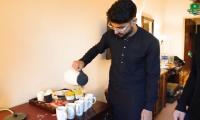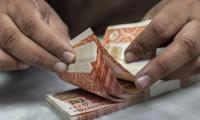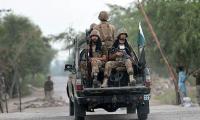This August, we look back 70 years towards the partition of India – essentially the vivisection of Punjab and Bengal. Bengal, of course, had been partitioned earlier while the prosperous and thriving province of Punjab – where different communities coexisted peacefully – underwent a traumatic division in 1947.
Today, there is a frenzied effort to record the oral histories of the few remaining survivors and research this historic event. For too long, the study of Partition was confined to the politics of the two states while the human aspect of the event was glossed over. Over the past two decades, a number of scholars have sought to rectify this aberration and some seminal work has focused on the experiences of individuals on either side.
Among the efforts that stand out is the 1947 Partition Archive spearheaded by Guneeta Singh Bhalla, who is based in the US. This oral history project is a compilation of over 4,000 stories of Partition survivors.
Another commendable effort is the Partition Museum in Amritsar which opened in October last year. Initiated by Kishwar Desai, the museum contains artefacts, stories and recordings of survivors and will be formally inaugurated on August 17, 2017 by the chief minister of Indian Punjab, Captain Amarinder Singh. In his previous tenure, Captain Singh played a stellar role in promoting cultural and economic ties between both Punjabs. The presence of his counterpart, the chief minister of Punjab in Pakistan, would have made the occasion truly historic.
Partition has been a significant part of my persona as a child of two families who were affected by the division of India as well as a historian. I can recollect my response to the very mention of Partition or Lahore from my parents and grandparents: “Here we go again!” or “not again!”.
Like most Punjabis, my entire family had been affected by Partition and bore the indelible scars of that angst. For children, it was impossible to fathom the nostalgia their elders felt for the lost homes that they left behind. For us, my grandmother’s habit of comparing everything to Lahore and her nostalgia about her palatial new home that she had walked out of, was monotonous.
My cousins would ridicule the oldies who, on their morning walks, would talk endlessly about Lahore. “What else will they discuss but Lahore?” one cousin scoffed. Years later, I saw a group of Lahoris at the India International Centre, New Delhi, who reminisced about their Lahore days together. Pran Nevile, the author of ‘Lahore: A Sentimental Journey’ (Penguin, 1993) is part of this group.
As I grew up and developed an interest in Partition and interacted with scholars from overseas, I began to empathise with the nostalgia and pathos felt by my parents and in-laws. As an army officer, my father had been in charge of the evacuation of refugees across the border. I realised that I had long been ignoring these priceless sources of oral history in my own home. Meanwhile, in my capacity as a historian, I began to realise that our textbooks tend to relegate the other story of August 1947: the painful and traumatic partition.
Gradually, I began to interview and record my father’s recollections. As for my in-laws, their amazing story of being engaged, then losing touch with each other in the chaos of Partition and then coincidentally meeting again at a refugee camp after Partition has been covered by the global media. Their belongings, which they carried across the border, are the only concrete receptacle of the painful episode.
I must credit my younger son, Tridivesh Singh Maini, who was a shade better than me. Growing up, he viewed his grandparents as raconteurs affected by the moving sagas of Partition. He co-authored a book, ‘Humanity Amidst Insanity: Hope During and after the Indo-Pak Partition’ (2009), with two Pakistani journalists, Tahir Malik and Ali Farooq Malik, that highlighted acts of Muslims rescuing non-Muslims and vice versa. These were miniscule streaks of humanity in this phase of barbaric insanity.
For me, the best part of the entire saga was that I took my parents back to their roots in Lahore. They gained closure as they experienced the warmth and bonhomie of the people who now lived in their abandoned utopia. And the two objects that my in-laws carried across the border – an embroidered coat and a leather briefcase – are now on display at the Partition Museum in Amritsar for the purposes of posterity.
Hopefully, future generations will draw lessons from this painful episode that had a tumultuous impact on innumerable lives. Both countries should heed the sagacious advice of former Indian prime minister Dr Manmohan Singh and make our borders more porous rather than making a spectacle of ourselves through jingoistic heckling on the Wagah border.
The writer is a historian based in New Delhi. This piece has been published in collaboration with Aman ki Asha.
An aeroplane of the national flag carrier of Pakistan is seen in this file photo. — AFPWhile Pakistan considers...
Representational image of a graph depicting various variables. — APP/FileInitiated by the centre and fiercely...
In this picture taken on April 16, 2023, people throng a market area during shopping in Lahore. — AFPOne of the...
Honour crimes also target men. In Sikandar Ali Lashari vs The State, SHC upheld conviction passed by ATC for honour...
If Sindh earmarks Rs20 million per police station, it will cost only Rs10 billion to make them effective first...
A complex and difficult policy environment seems to be highlighted by US’s recent application of sanctions on...







